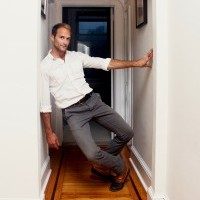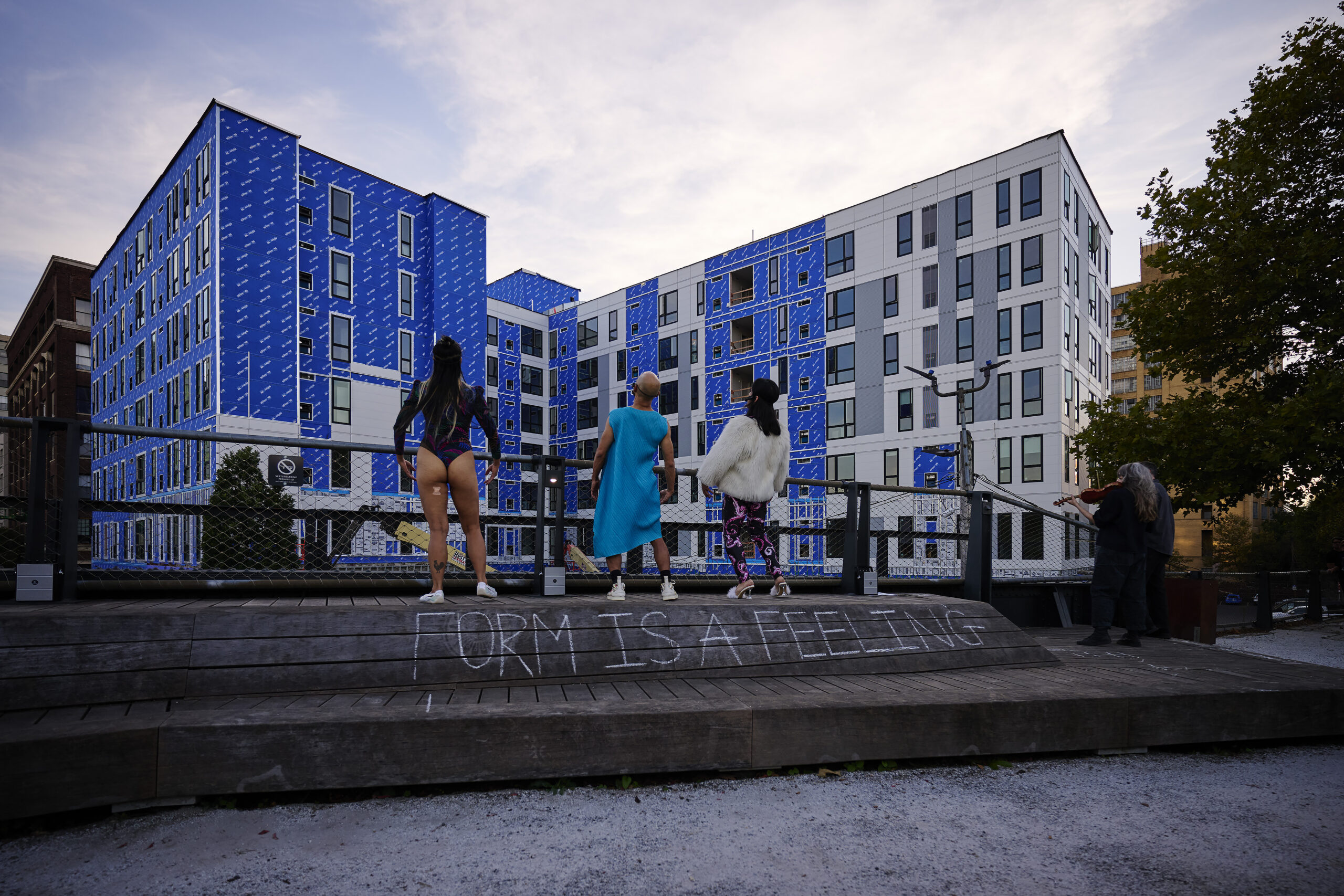The following review is a composite, a collage of four pieces written by four writers for the thINKingDANCE workshop with the critic Elizabeth Zimmer. I chose selections from each work, not to formulate my own opinion of the show (which I did attend), but to provide as extensive an overview as possible of the responses to the dances exhibited at ThirdBird’s Seen & Heard series. Where possible I have kept the author’s language in tact, editing only for clarity and coherence.
The value of a composite review lies in its multiplicity, in its renegotiation of the standard reviewing platform with its singular focus and privileging of the “professional” eye of the solitary critic. Producing this collage leads me to question this practice of favoring a single voice, to recognize where my own evaluative assertions of a work’s integrity are dependent upon my subjective experience at the theater: who was I sitting by, what mood was I in, did I have a good dinner. The hope is that the lone critic’s understanding of the field, their knowledge of the history, traditions, and current practices, help them to shape a fully described and integrated analysis independent of their individual experience. And I hope that is what this composite provides, a picture of Seen & Heard that moves beyond my own experience of the work, beyond even the impressions generated by the four authors whose words are reconfigured here, to a thickly textured remembrance and objectively descriptive response to the three pieces performed.
SEEN, BUT MOSTLY HEARD
Newly-named ThirdBird (the producing/curating venture of Anna Drozdowski and Dustin Hurt) presented three pieces spanning three decades in the second night of the Seen & Heard series at Christ Church Neighborhood house. The performers – three Philly regulars and a New York import – maneuvered the line between dance and theater and explored ways to relate language and movement, as the program vacillated between audience engagement and artistic self-absorption.
In her restaging of 2005’s abun/dance, Christina Zani’s 12-minute “talking dance” best achieved an integration of text into performance. The dance began inside a spotlit circle of Smarties, as Zani occupied the audience with accumulating gestures and phrases. Reciting Tom Frick’s text about the multitude of various things: natural, manufactured, and bizarre (“12 types of love affairs”), she teetered from side to side, focusing most movement and attention on her hands: arms open, palms forward in a look-at-me gesture, or pointing to her hand as if to a chart. She physicalized the excesses of abundance with more than a mouthful of Hostess cake, which garbled her delivery. The dance felt largely presentational, which mirrored the lists she recited. She entered dressed casually, unpacking various material possessions. While I enjoyed the feeling of setting up, and the contrast this provided, I felt the references to abundance were a bit heavy-handed. And Zani’s last saccharine words that “I think we shall all be very happy,” left the piece flat and aban/doned.
Headlong Dance Theater’s Amy Smith and Andrew Simonet safely and respectfully verbalized a social contract with each other and the audience: “May I dance like I don’t care?” “Yes.” May I begin to feel uncomfortable?” “Yes.” Dressed in post-war browns and whites, they reconstructed Headlong’s very first dance, the 15-minute Permit, anno 1994. Slyly playing off university social codes of the times that ordained seeking permission before intimacies, the two pose to each other a series
of questions whose responses generated the next move: actions or observations which their partner could choose to permit, or not. In effect, the audience got clues into what was about to happen, a running commentary on the meaning of movements they might otherwise not notice or interpret differently.
Going beyond the flaying of an enforced social convention—which could have been a mere one-note piece— Headlong isolated for exposure, both the purposeful manipulation of those close to us and the equally intentional decision-making behind dance creation. The work succeeded least when the questioning and improvisatory responses were little more than twee, the clever game behind the piece overwhelming and constricting the movement.
Levi Gonzalez’s Intimacy seemed equally focused on the game rather than the dance, through a too-long series of intentionally nonchalant vignettes including a repeat showing of “some material I’ve been working on,” a scene of implosive convulsions, awkward falling, one-leg balancing over chairs, and a segment of joyful club dancing. Following a seated meditation (instructing the audience to do what we wish while he meditates for five minutes on stage, seated cross-legged on a yoga block with sunglasses on), Gonzalez announced everything: from what he was about to do, to what he felt about it, and what he was unable to achieve. He disappeared behind the stage to invoke via microphone Peggy Phelan’s theory about the valuelessness and emptiness of performance. I felt like I was sitting in a Miranda July movie, anticipating a dance with a t-shirt pulled over his head. He delivered.
In the end, the movement felt secondary, disposable even, and Gonzalez’s piece more insular than intimate. There may have been an era when this solo would have been daring, but I read it as self-indulgent and needy.
Indeed, the evening’s most poignant moment snuck in during the low-lit pause after abun/dance when program presenter Anna Drozdowski meticulously swept up Zani’s scattered candies and disposed of them behind the back curtain. At last, a graceful task with a clear purpose.
ThirdBird presented Seen & Heard: Intimacy, Abun/dance & Permit
Christ Church Neighborhood House
Saturday, October 8, 2011 8pm & Sunday, October 9, 2011 7pm
No further performances






